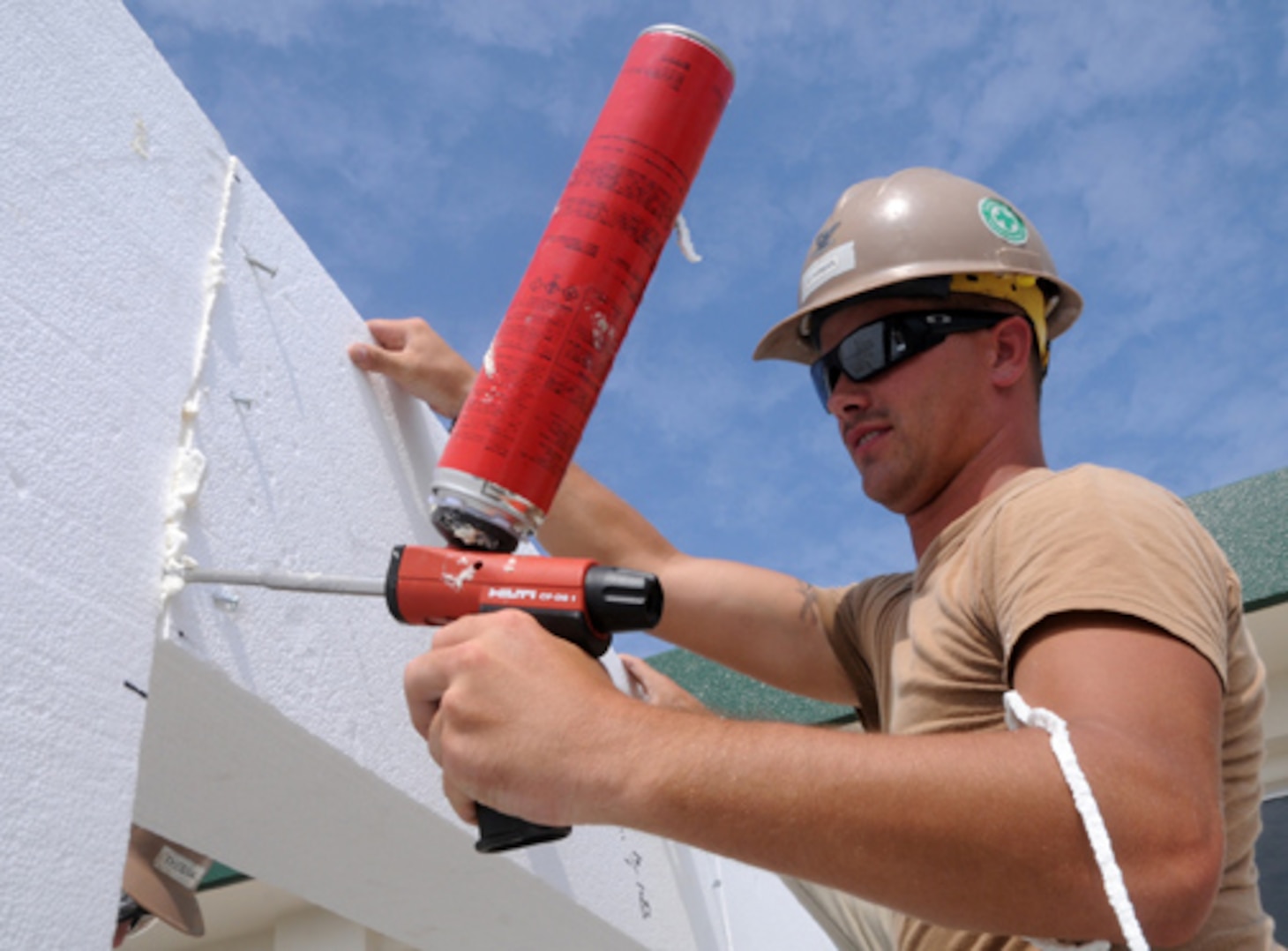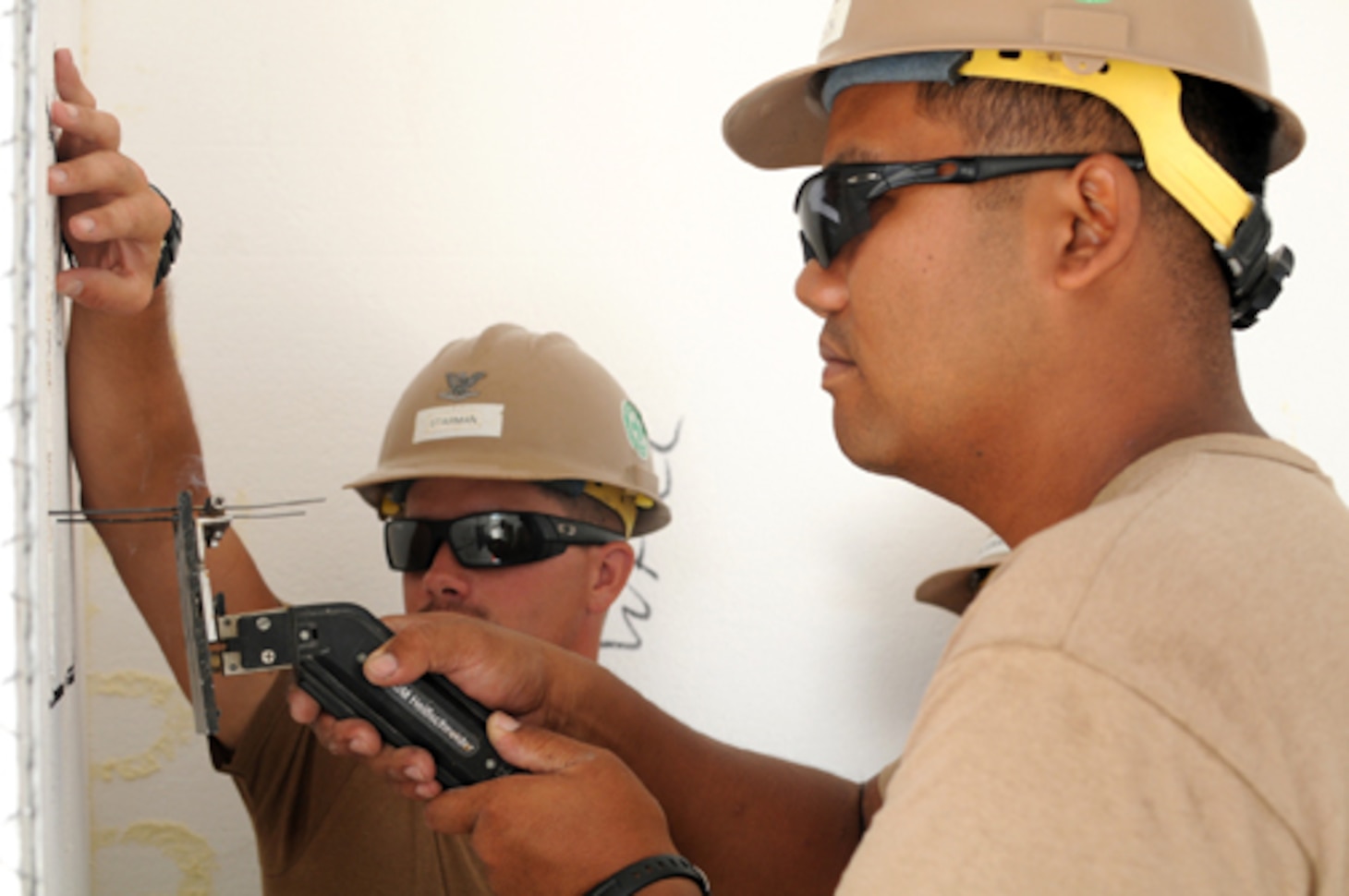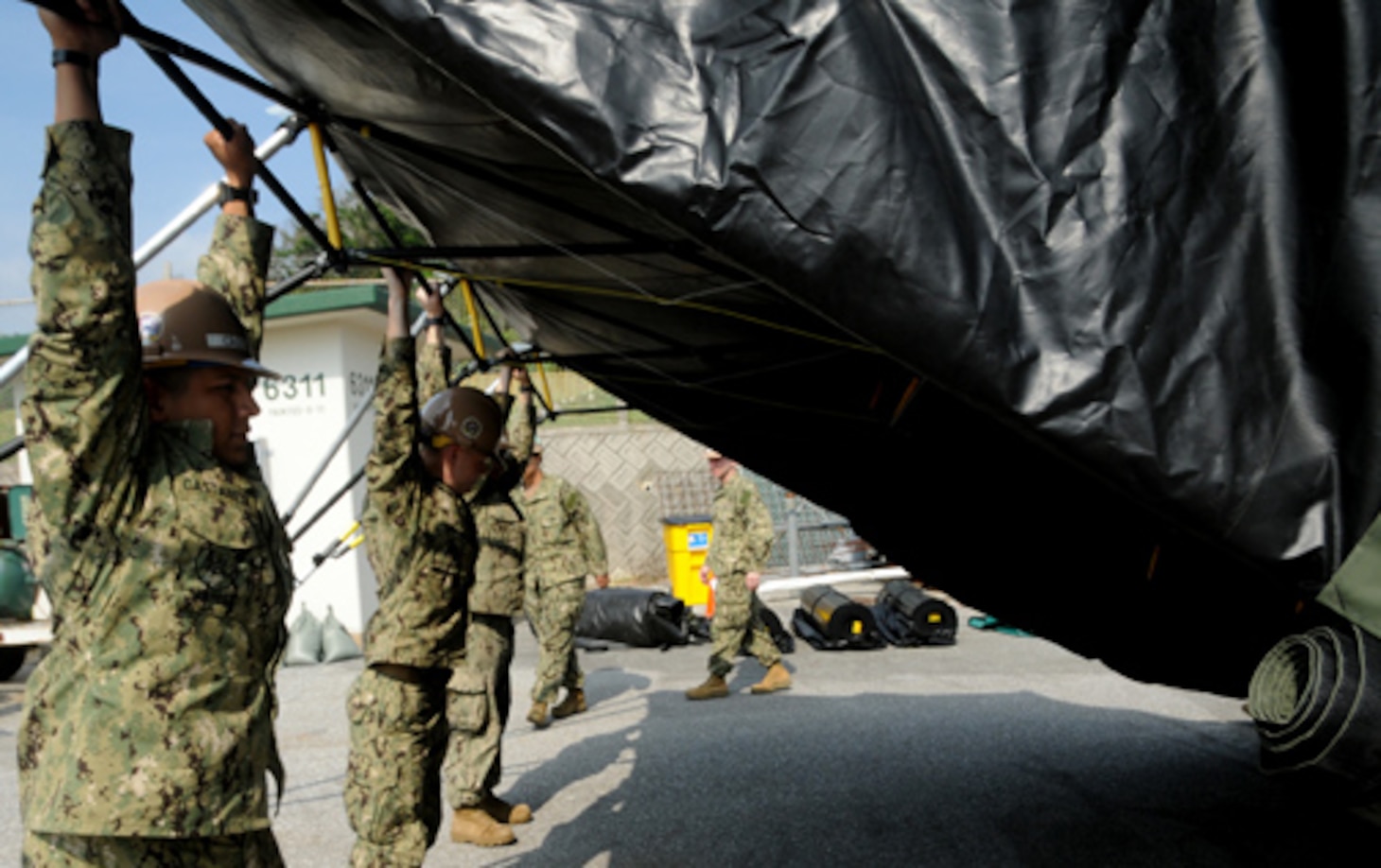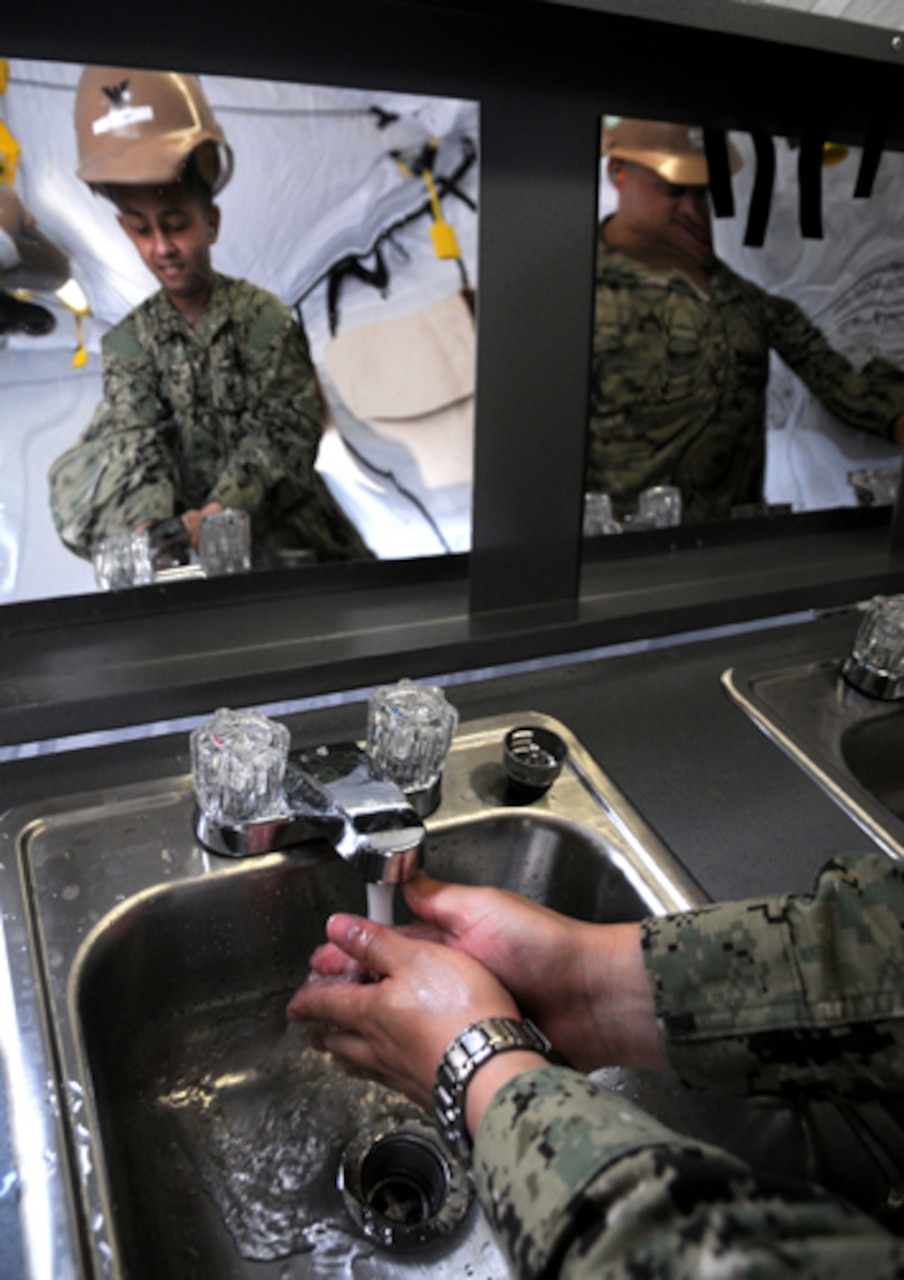NMCB 5 is Right on Target in Okinawa
By Seabee Magazine, / Published May 17, 2013
Photos by MC1 John P. Curtis, NMCB 5
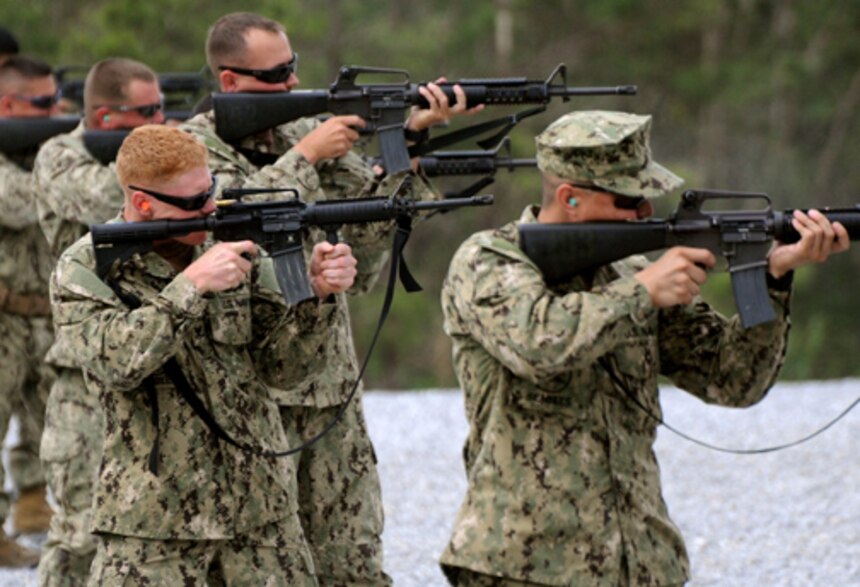
130506-N-SD120-008
OKINAWA, Japan (May 6, 2013) Seabees assigned to Naval Mobile Construction Battalion (NMCB) 5 shoot from the standing position during a rifle qualification test on Camp Schwab. NMCB 5 is currently supporting Navy and joint forces throughout the U.S. Pacific Command (PACOM). (U.S. Navy photo by Mass Communication Specialist 1st Class John P. Curtis/Released)
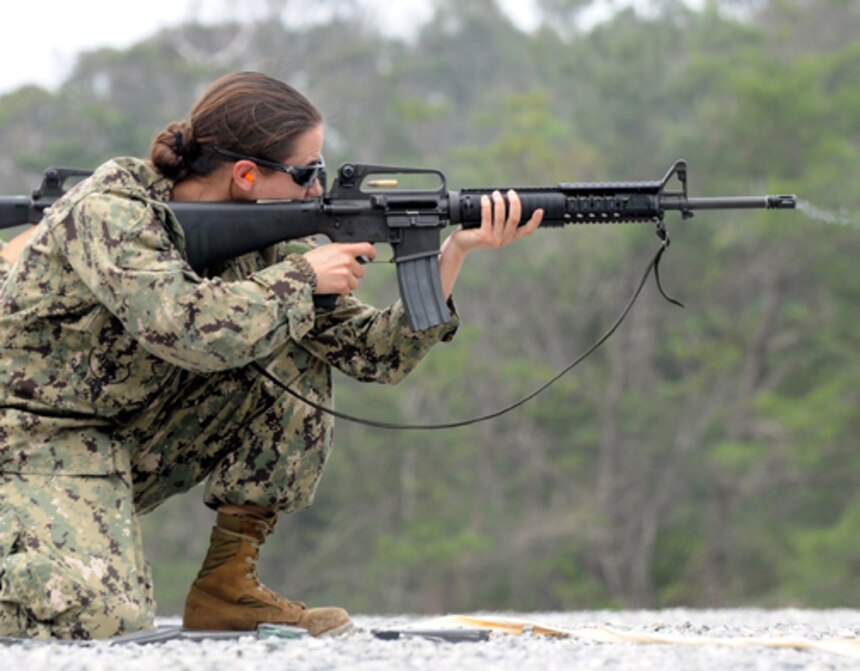
130506-N-SD120-011
OKINAWA, Japan (May 6, 2013) Builder 3rd Class Briana Craig shoots from the kneeling position during Naval Mobile Construction Battalion (NMCB) 5’s rifle qualification range on Camp Schwab. NMCB 5 is currently supporting Navy and joint forces throughout the U.S. Pacific Command (PACOM). (U.S. Navy photo by Mass Communication Specialist 1st Class John P. Curtis/Released)
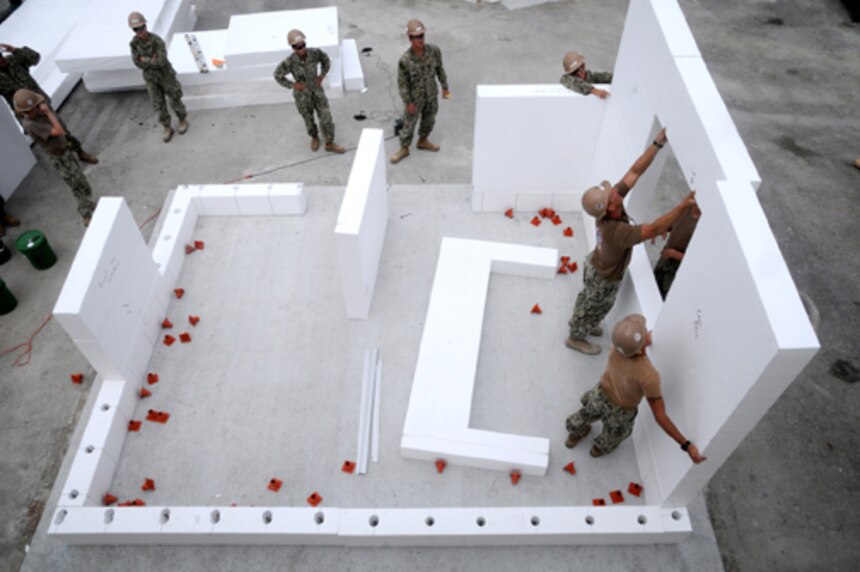
130507-N-SD120-001
OKINAWA, Japan (May 7, 2013) Naval Mobile Construction Battalion (NMCB) 5 Seabees begin placing the expanded polystyrene walls together on an alternative building structure being built on Camp Marvin G. Shields. The structure is made out of expanded polystyrene blocks and a layer of a concrete mix. Expanded polystyrene is a similar material to white foam coolers except it is thicker and fire resistant. After the concrete mix is applied to the interior and exterior of the building, it is rated as being able to withstand hurricane winds and earthquakes. The structure was built in five days, while Seabees train in preparation for NMCB 5 construction projects in the Philippines, Malaysia, Indonesia, and Thailand. NMCB 5 is currently supporting Navy and joint forces throughout the U.S. Pacific Command (PACOM). (U.S. Navy photo by Mass Communication Specialist 1st Class John P. Curtis/Released)

130507-N-SD120-010
OKINAWA, Japan (May 7, 2013) Steelworker 3rd Class Dustin Starman glues together the expanded polystyrene blocks on an alternative building structure that is a Naval Mobile Construction Battalion (NMCB) 5 construction project on Camp Marvin G. Shields. The structure is made out of expanded polystyrene blocks and a layer of a concrete mix. Expanded polystyrene is a similar material to white foam coolers except it is thicker and fire resistant. After the concrete mix is applied to the interior and exterior of the building, it is rated as being able to withstand hurricane winds and earthquakes. The structure was built in five days, while Seabees train in preparation for NMCB 5 construction projects in the Philippines, Malaysia, Indonesia, and Thailand. NMCB 5 is currently supporting Navy and joint forces throughout the U.S. Pacific Command (PACOM). (U.S. Navy photo by Mass Communication Specialist 1st Class John P. Curtis/Released)
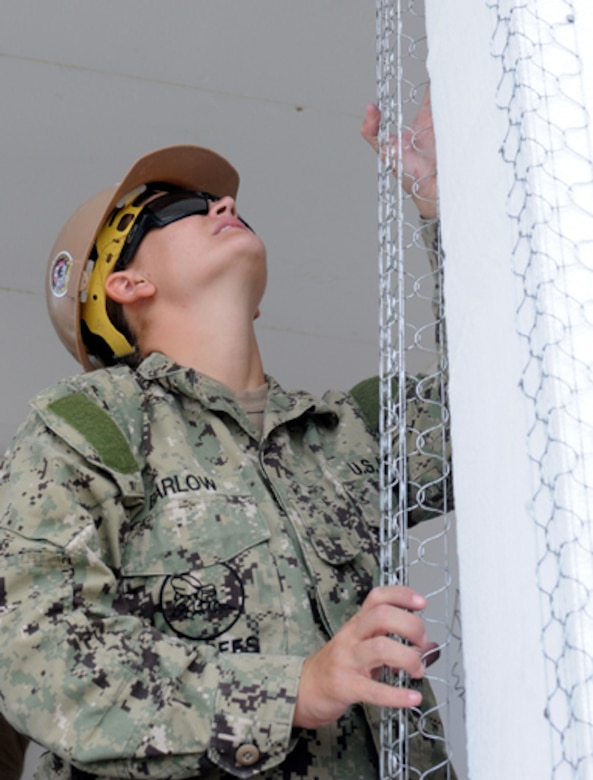
130508-N-SD120-005
OKINAWA, Japan (May 8, 2013) Builder 3rd Class Brittany Barlow places corner beads in the expanded polystyrene block, that make the up the framing of an alternative building structure, to ensure smooth corners after a concrete mix is applied to the structure. Naval Mobile Construction Battalion (NMCB) 5 Seabees built the structure in five days, while training in preparation for NMCB 5 construction projects in the Philippines, Malaysia, Indonesia, and Thailand. The structure is made out of expanded polystyrene blocks and a layer of a concrete mix. Expanded polystyrene is a similar material to white foam coolers except it is thicker and fire resistant. After the concrete mix is applied to the interior and exterior of the building, it is rated as being able to withstand hurricane winds and earthquakes. NMCB 5 is currently supporting Navy and joint forces throughout the U.S. Pacific Command (PACOM). (U.S. Navy photo by Mass Communication Specialist 1st Class John P. Curtis/Released)

130508-N-SD120-021
OKINAWA, Japan (May 8, 2013) Steelworker 3rd Class Dustin Starman watches as Construction Electrician 2nd Class Dean Cuenca cuts an area out of the expanded polystyrene block wall with a hotwire groover, to place an electric box in for an alternative building structure. Naval Mobile Construction Battalion (NMCB) 5 Seabees built the structure in five days, while training in preparation for NMCB 5 construction projects in the Philippines, Malaysia, Indonesia, and Thailand. The structure is made out of expanded polystyrene blocks and a layer of a concrete mix. Expanded polystyrene is a similar material to white foam coolers except it is thicker and fire resistant. After the concrete mix is applied to the interior and exterior of the building, it is rated as being able to withstand hurricane winds and earthquakes. NMCB 5 is currently supporting Navy and joint forces throughout the U.S. Pacific Command (PACOM). (U.S. Navy photo by Mass Communication Specialist 1st Class John P. Curtis/Released)
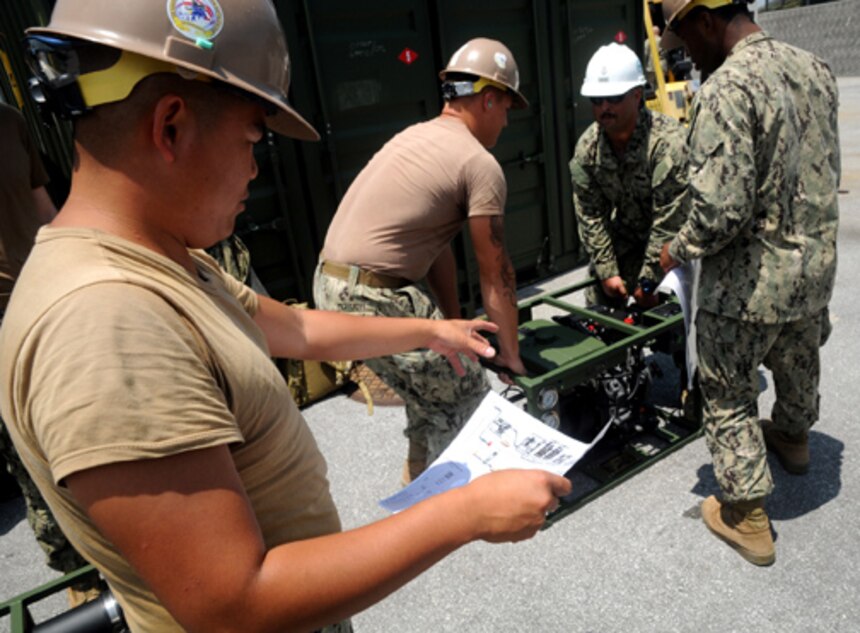
130508-N-SD120-024
OKINAWA, Japan (May 8, 2013) Builder Constructionman Kelvin Chen, from Loveland, Colo., directs Seabees where to place a part of the lightweight water purification system while learning how to assemble the system and how it operates. Naval Mobile Construction Battalion (NMCB) 5 conducted block training evolutions to increase the combat proficiency of the Seabees assigned to the command and to test the equipment used during field operations. NMCB 5 is currently supporting Navy and joint forces throughout the U.S. Pacific Command (PACOM). (U.S. Navy photo by Mass Communication Specialist 1st Class John P. Curtis/Released)

130508-N-SD120-040
OKINAWA, Japan (May 8, 2013) Seabees assigned to Naval Mobile Construction Battalion (NMCB) 5 assemble a shower tent on Camp Marvin Shields. NMCB 5 conducted block training evolutions to increase the combat proficiency of the Seabees assigned to the command and to test the equipment used during field operations. NMCB 5 is currently supporting Navy and joint forces throughout the U.S. Pacific Command (PACOM). (U.S. Navy photo by Mass Communication Specialist 1st Class John P. Curtis/Released)
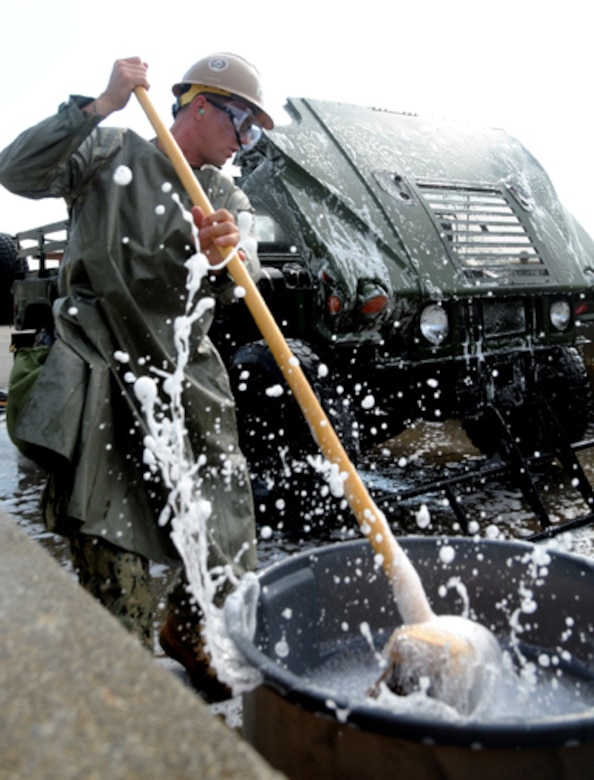
130508-N-SD120-044
OKINAWA, Japan (May 8, 2013) Builder 3rd Class Ethan Knapp demonstrates the way to scrub a vehicle during decontamination, in the event of a chemical, biological or radiological attack. Seabees assigned to Naval Mobile Construction Battalion (NMCB) 5 conducted block training evolutions to increase the combat proficiency of the Seabees assigned to the command and to test the equipment used during field operations. NMCB 5 is currently supporting Navy and joint forces throughout the U.S. Pacific Command (PACOM). (U.S. Navy photo by Mass Communication Specialist 1st Class John P. Curtis/Released)
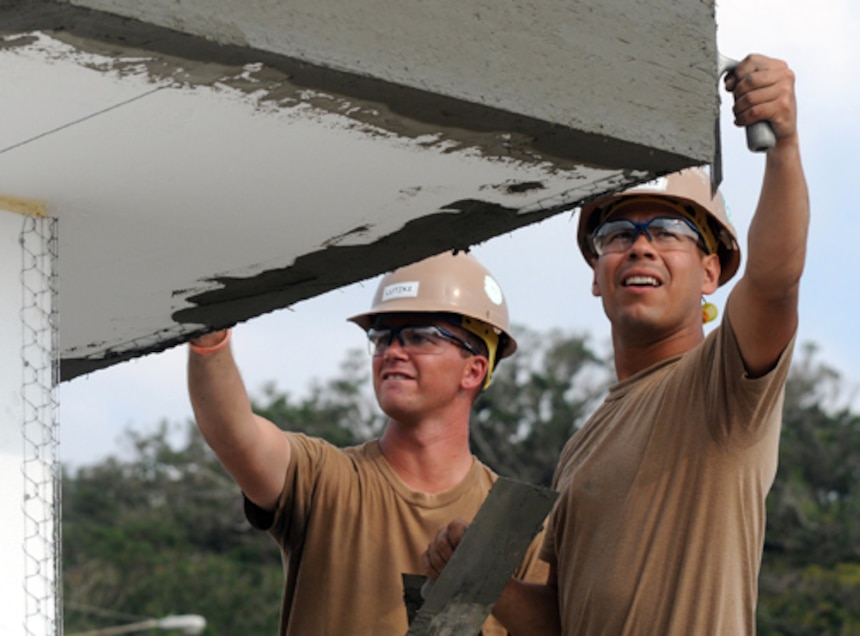
130508-N-SD120-048
OKINAWA, Japan (May 8, 2013) Builder Constructionman Justin Lutzke , left, and Builder 3rd Class Jose Valdez use trowels to level the wet concrete on the fascia of the roof’s edge on an alternative building structure. Naval Mobile Construction Battalion (NMCB) 5 Seabees built an alternative building in five days, while training in preparation for NMCB 5 construction projects in the Philippines, Malaysia, Indonesia, and Thailand. The structure is made out of expanded polystyrene blocks and a layer of a concrete mix. Expanded polystyrene is a similar material to white foam coolers except it is thicker and fire resistant. After the concrete mix is applied to the interior and exterior of the building, it is rated as being able to withstand hurricane winds and earthquakes. NMCB 5 is currently supporting Navy and joint forces throughout the U.S. Pacific Command (PACOM). (U.S. Navy photo by Mass Communication Specialist 1st Class John P. Curtis/Released)
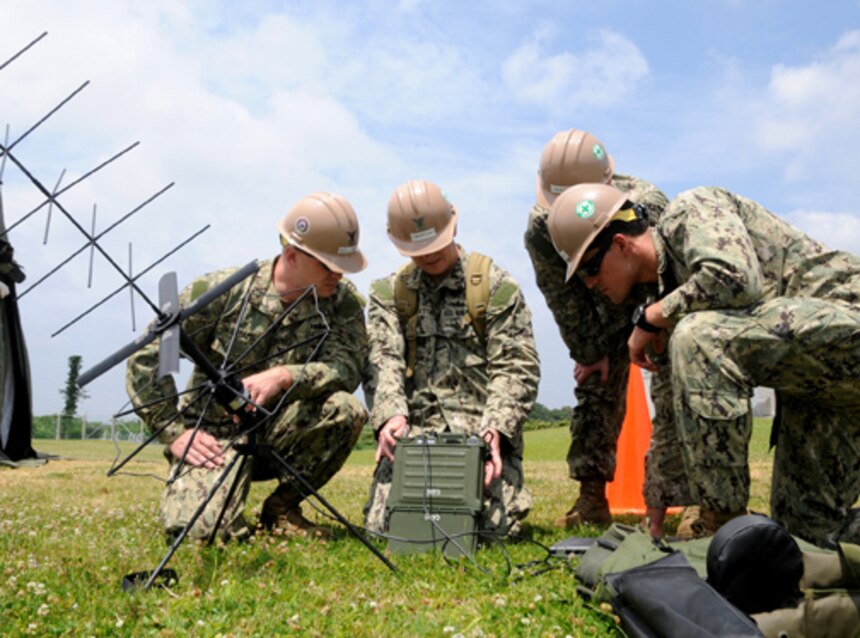
130509-N-SD120-006
OKINAWA, Japan (May 9, 2013) Electronics Technician 1st Class Elliott Burton, center, teaches other Seabees how to setup and use a personal radio configuration and a satellite communication antenna. Seabees assigned to Naval Mobile Construction Battalion (NMCB) 5 conducted block training evolutions to increase the combat proficiency of the Seabees assigned to the command and to test the equipment used during field operations. NMCB 5 is currently supporting Navy and joint forces throughout the U.S. Pacific Command (PACOM). (U.S. Navy photo by Mass Communication Specialist 1st Class John P. Curtis/Released)

130509-N-SD120-009
OKINAWA, Japan (May 9, 2013) Yeoman 3rd Class Leonardo Ramirez tests the sinks he just installed in a portable shower tent. Seabees assigned to Naval Mobile Construction Battalion (NMCB) 5 conducted block training evolutions to increase the combat proficiency of the Seabees assigned to the command and to test the equipment used during field operations. NMCB 5 is currently supporting Navy and joint forces throughout the U.S. Pacific Command (PACOM). (U.S. Navy photo by Mass Communication Specialist 1st Class John P. Curtis/Released)

130509-N-SD120-024
OKINAWA, Japan (May 9, 2013) Steelworker 3rd Class Daniel Buskeness, from Mariposa, Calif., uses a trowel to level the wet concrete walls of an alternative building structure. Naval Mobile Construction Battalion (NMCB) 5 Seabees built an alternative building in five days, while training in preparation for NMCB 5 construction projects in the Philippines, Malaysia, Indonesia, and Thailand. The structure is made out of expanded polystyrene blocks and a layer of a concrete mix. Expanded polystyrene is a similar material to white foam coolers except it is thicker and fire resistant. After the concrete mix is applied to the interior and exterior of the building, it is rated as being able to withstand hurricane winds and earthquakes. NMCB 5 is currently supporting Navy and joint forces throughout the U.S. Pacific Command (PACOM). (U.S. Navy photo by Mass Communication Specialist 1st Class John P. Curtis/Released)



